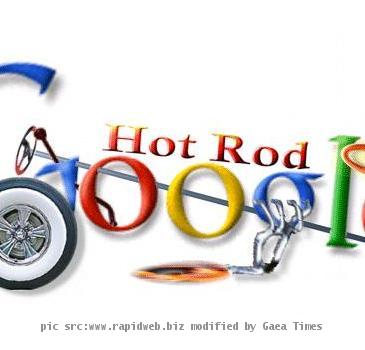‘Cloud’ music plans get lift from lower prices, stronger cell phone networks, extra features
By Ryan Nakashima, APSunday, April 18, 2010
‘Cloud’ music plans no longer just pie in the sky
LOS ANGELES — There’s no more need to own songs before being able to listen to them at your convenience.
No more buying music to download onto computers and mobile devices — and certainly no more stacking CDs on shelves. Virtually the whole world of recorded music is at your fingertips at any time, for a subscription, over the Internet.
Services that make this scenario possible haven’t proven very popular yet. But new price cuts and advances in technology could finally drive the idea to the mainstream.
For instance, Rhapsody International Inc. and Thumbplay Inc. now offer the ability, for $10 a month, to choose and play almost any song or album instantly on a mobile device that can connect to the Internet over a cell phone network.
Justin Darcy, a 32-year-old sales director at a resort company in San Francisco, says he consumes so much music it would cost him $10,000 a year if he didn’t have a Rhapsody plan. He calls it “one of the greatest values in consumer goods I’ve ever come across.”
Given the obvious benefit of being able to listen to millions of songs as if they were in your personal stash, why haven’t services like these gotten more use?
Partly because of poor marketing, previously clunky execution and the fact that people are more familiar with compact discs and downloading songs from Apple Inc.’s iTunes music store. People who spend less than $120 a year on music also wouldn’t see the subscription plans as such a great deal.
But the music providers hope they can get more customers by making the services easier to use, taking advantage of increasingly robust cell phone networks to deliver the music. And in general, consumers are getting more comfortable using many kinds of services that rely on files stored on distant computers and accessed remotely, a concept known as “cloud computing.”
The subscription services have come down in price — they generally were $15 a month until recently — and broader adoption could push prices lower still. One big boost could come if Apple begins offering such a service. In December it bought an online music retailer called Lala.com that offers access to songs that users can store in a digital locker. Apple declined to comment on its plans.
The subscription services funnel royalties to recording companies, which are eager for new revenue streams to replace CD sales. That once-lucrative business has been declining for years as consumers have shifted to buying individual tracks or pirating music altogether.
“We are very bullish on the prospects of subscriptions over time,” says Michael Nash, executive vice president of digital strategy for Warner Music Group Corp.
One problem is finding the right price for the service and having as many people as possible sign up. If only hard-core music fans subscribe because it lets them reduce their spending, the music industry might end up cannibalizing its other sales.
Right now the median U.S. music buyer spends about $80 a year — not enough to make these new services a revolutionary deal, according to Sonal Gandhi, a Forrester Research media analyst. More than half of consumers don’t spend anything at all.
She predicts the number of U.S. subscribers for such plans will rise from 2.1 million now to 5 million by 2014. Why not more? Among other things, “not everyone wants to be tied to a monthly bill,” she says. One solution could be for wireless carriers to bundle a music subscription with their monthly services. Nearly 450,000 Vodafone customers in Europe signed up for unlimited access to 2 million songs last year when the plan was added to a wireless data package for 3 euros ($4) a month.
Previous music subscription plans had another problem: They made consumers download songs to their computers and transfer them to approved mobile devices — and none included the iPhone or iPod.
That’s changing. A $10 monthly plan from MOG Inc. will let people stream music instantly on iPhones and devices that run Google Inc.’s Android software, beginning in May.
Users can make unlimited downloads to the device so they have access to music on a plane or in other settings without wireless coverage. MOG’s service also has an intelligent shuffle function that lets people control whether randomly selected songs come from just one artist or many similar sounding ones.
MOG’s CEO and founder, David Hyman, predicts such services will prove so popular that they’ll replace CDs and downloads eventually.
“If you’re the kind of consumer that spends $6 to $10 a month on music, this just blows everything else away,” Hyman says.
Another new service, Thumbplay, works on several BlackBerry models, and there are plans to launch it on Android devices and iPhones soon, also for $10 a month. To ease iTunes users into the service, the application can copy iTunes playlists immediately over the air, saving potential converts the trouble of remaking them.
“The first thing that we want to do is just accept that probably 100 million people out there are using iTunes and make it easy for them to make the transition,” says CEO Evan Schwartz.
Each of these services has a huge catalog that includes songs from all the major recording companies and many independents. MOG has 7 million tracks. Thumbplay boasts 8 million and Rhapsody claims 9.5 million. None, however, has access to bands that have chosen to remain away from digital outlets, such as the Beatles.
There are other ways to listen to music from the cloud, of course. But subscription plans are needed if you want to pick exact songs or albums.
For instance, free services like Pandora’s Internet radio allow you to select tunes by genre or theme and hear them on portable devices, but you can’t choose the precise song or artist you want. Online music services such as MySpace Music allow you to select specific songs or albums — for free, with the site supported by advertising — but you can listen to the tracks only on a computer.
No distributor has been able to combine the elements of Pandora and MySpace Music and launch a free, on-demand, mobile music service. Advertisers aren’t yet willing to pay enough to cover the higher royalties that recording companies charge for mobile song streams.
That leaves many people in the music business hoping that the marriage of subscription plans to better mobility will be the spark that helps reverse the industry’s decline.
“The Holy Grail is going to be cross-platform, meaning that one subscription lets me hear it on my connected device, on my home computer, on my stereo, in my car,” says Donald Passman, a music business lawyer in Los Angeles and author of “All You Need to Know About the Music Business.”
That multi-device capability was the appeal Rhapsody’s service held for Alex Barberis, a 27-year-old software engineer in Miami.
Barberis got a Rhapsody subscription as a Christmas present from his brother, but he was about to cancel the plan because the website was slow and he didn’t have an approved device on which to transfer downloads. However, Barberis changed his mind after Rhapsody released an iPhone application that allows unlimited streaming of 9.5 million songs for $9.99 a month on iPhones and Android devices and works with home stereo systems and in cars.
Barberis says the service isn’t perfect. It hiccups if he loses cell phone reception in his car. But Rhapsody says it will fix that problem soon by allowing songs to be stored on devices for playback outside of cell phone coverage.
“I think overall I’m probably going to try it out for a little while more,” Barberis says.
On the Net:
Rhapsody: bit.ly/ceViqo
MOG: bit.ly/boIhup
Thumbplay: bit.ly/cYQyLb
Tags: Arts And Entertainment, California, Communication Technology, Consumer Electronics, Los Angeles, Media Distribution, Mobile Communications, Mobile Media, music, Music Downloading, North America, Online Media, Personnel, Products And Services, United States, Wireless Networking, Wireless Technology

